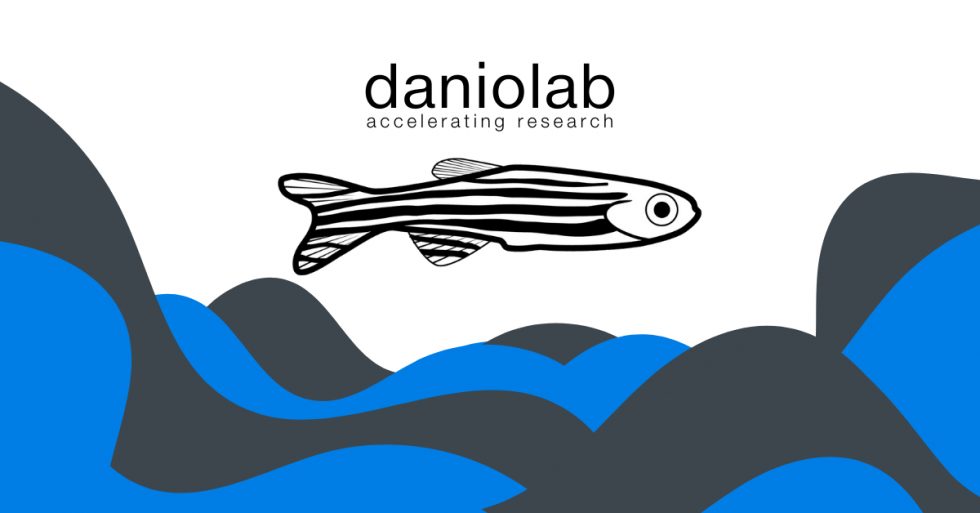
The Unsung Heros
Zebrafish (Danio Rerio) is a popular lab animal model (similar to rodents or frogs) that is commonly utilized in worldwide biomedical research studies. Some people view zebrafish as the aquatic version of a “lab rat”, which might be a more common laboratory testing vertebrate in the general public’s eye. These fish serve as critical research tools in studying genetics relating to developmental and physiological focused studies that can correspond to human development.
Natural History
Zebrafish, originating from the minnow family are a pretty hardy tropical fish with a blue/silver coloration possessing 5 horizontal stripes, that grow up to an inch long. They’re native to India, where they can be found in slow-moving freshwater rivers and streams. In addition to being used in the laboratory, zebrafish are also a popular species in the aquarium/hobbyist field in which they can be easily bred in captivity in home aquaria. The ability to raise and culture these fish in captivity is one reason they are widely used in medical research along with some other advantageous and beneficial characteristics that we’ll touch on within this article.

Modeling Human Diseases in a Fish
One of the reasons why zebrafish are used as model animals in biomedical studies is because, like humans, they are also vertebrates (meaning they have a spinal cord, brain, heart, etc.) – but more importantly, their genome (or genetic makeup) is incredibly similar to that of a human genome. This makes them a great organism to study because we can make direct correlations from them.
70% of human genes are found in humans and around 83% of its gene composition that causes genetic-based diseases, which means we can accurately study associated diseases, figure out how they work, and then evaluate what treatments/drugs can help cure and remedy these diseases. The fact that zebrafish have many of the same body parts and organs as humans do, diseases that affect those components can theoretically be modeled in zebrafish.

Advantages of Using Zebrafish in Biomedical Research Over Mice (and other animals)
- Aquaculture – relatively easy to grow, culture, breed in captivity
- Cost – fairly low-cost lab animal to care for, compared to other animals
- Genome – fully sequenced genome and has 70% of human genes
- Transparency – their embryos are transparent which allows us to easily view their development and progress without harming them any further
- Regeneration – their natural regenerative capabilities is highly advantageous in developmental research
- Rapid Development/Maturity – zebrafish mature in about 3 months, with most of their organs developing in about 24 hours
- Reproduction – they reproduce rapidly; every week or so, and produce plenty of embryos to work with (50-300)
- Manipulation – embryos are fertilized externally such that they can easily be genetically manipulated and injected as necessary
3Rs Principle
Replacement – using an alternative method without the use of an animal model
Reduction – minimizing the number of animals used in testing
Refinement – developing the best techniques and methods to ensure optimal welfare and minimize possible animal suffering
Zebrafish usage conforms with the 3Rs principle, which is a bioethical framework developed and implemented by regulatory and compliance bodies. Although they are a vertebrate, they might not feel as much pain/suffering compared to a mammal. Additionally, in some instances, they can replace the need for rodents which may be advantageous in reducing the number of mammals required for animal testing. It can be said that zebrafish also reduces the time and energy needed to perform studies as they grow and reproduce faster than their lab animal counterparts.
As far as addressing the refinement aspect of the 3R principles, our team at Danio Lab works tirelessly at refining zebrafish husbandry practices in order to provide an optimal housing and culturing environment to aquaculture these fish as efficiently and effectively as possible. In other words, an integral part of our mission and goal as a company is to minimize the amount of distress that zebrafish may experience. We not only do this for fish health and well-being (although that is our primary goal), but we also do it optimizes their efficacy in whatever research study they are partaking in. Creating the best housing conditions for these fish ultimately produces more accurate scientific results and plays an important role in reproducibility.

Specialized Rooms/Areas Related to Zebrafish Operations:
- Rack/Tank Systems – Nursery and Adult areas
- Filtration System – Mechanical, Biological, and Chemical
- Quarantine Section
- Cleaning/Sterilization Area
- Screening Area
- Microinjection Stations
- Fluorescence Microscopy Setup
Research Areas where Zebrafish Models are Used
- Developmental Biology
- Genetic Studies
- Physiological Biology
- Toxicology
- Molecular Biology
- And many more fields of study

Examples of Human Diseases Studied Through Zebrafish
- Metabolic disorders
- Cardiovascular Diseases
- Cancer
- Neural Disorders
- Infectious Diseases
- Diabetes
- Muscle Disorders
- Kidney Diseases
- Blindness
- Digestive Diseases
Laboratory Techniques & Methods Associated with Zebrafish Research:
- Various Types of Microscopy
- Microinjection
- In situ hybridization
- Immunostaining
- Transgenic Technologies
- Morpholinos
- Transplantations
Future of Zebrafish
Zebrafish have grown to play an important role in biomedical studies and the development of new therapies since the early 1990s. These small fish are being more widely used in the model organism field since they offer some distinct advantages and are able to answer some significant scientific questions over other model animals such as mice, frogs, and fruit flies. As zebrafish research continues to expand, it’s critical to employ the best husbandry and management practices in labs and facilities to ensure fish remain healthy and fit (and d Housing, filtration, diet, and system maintenance are all key areas to refine to optimize the performance and health of your fish colonies.

